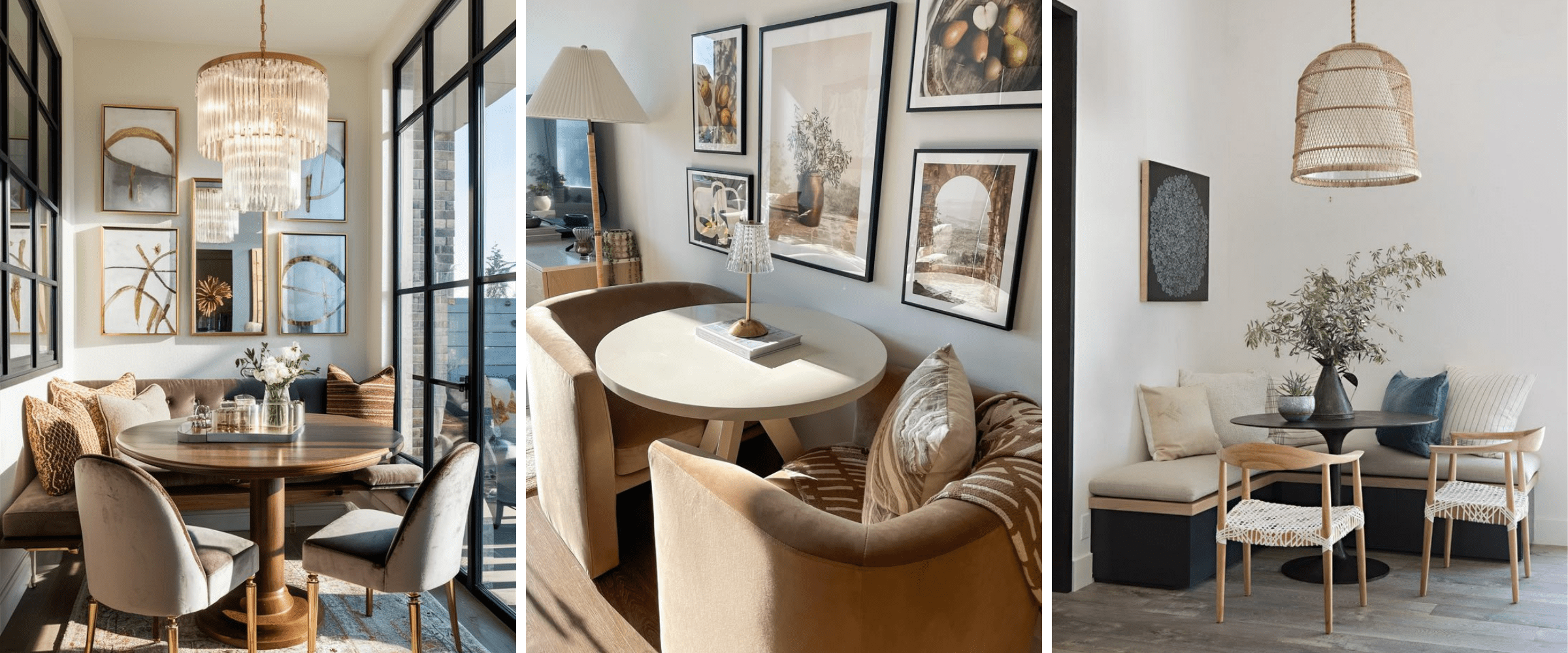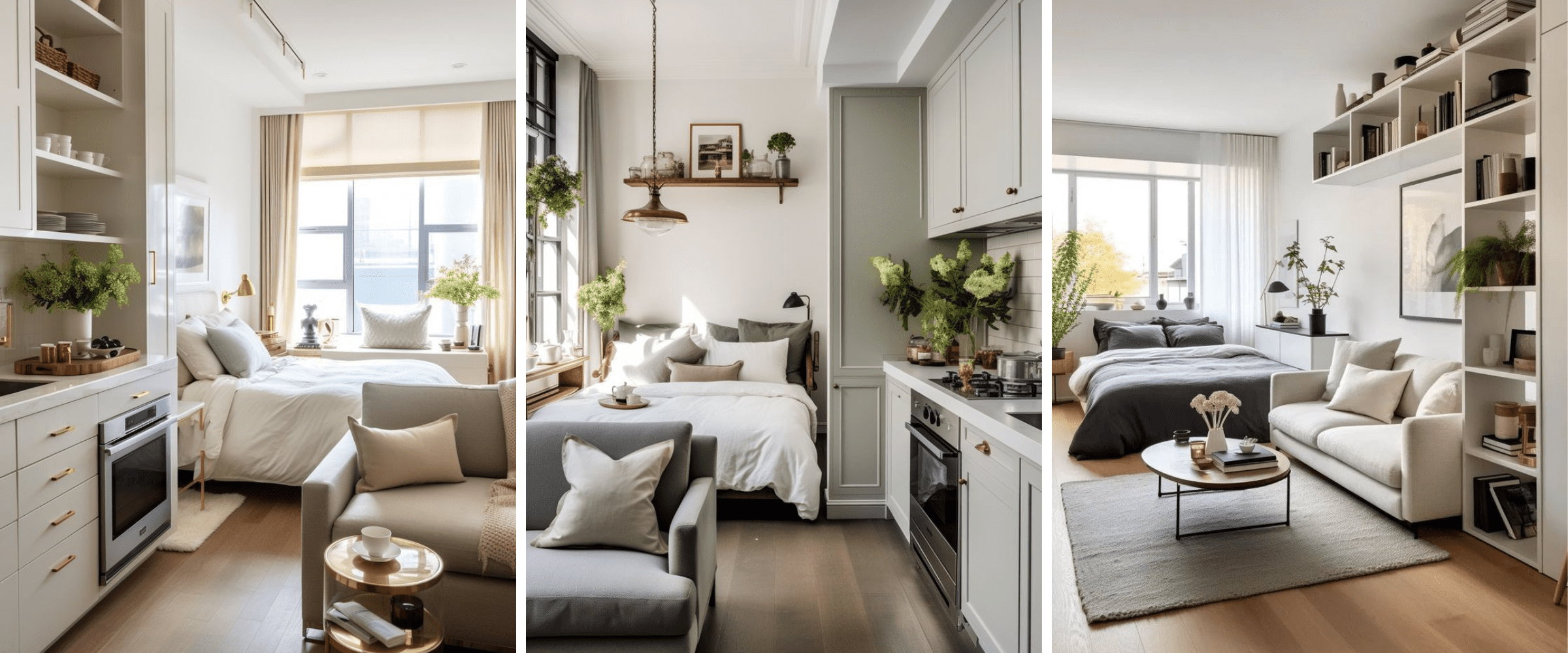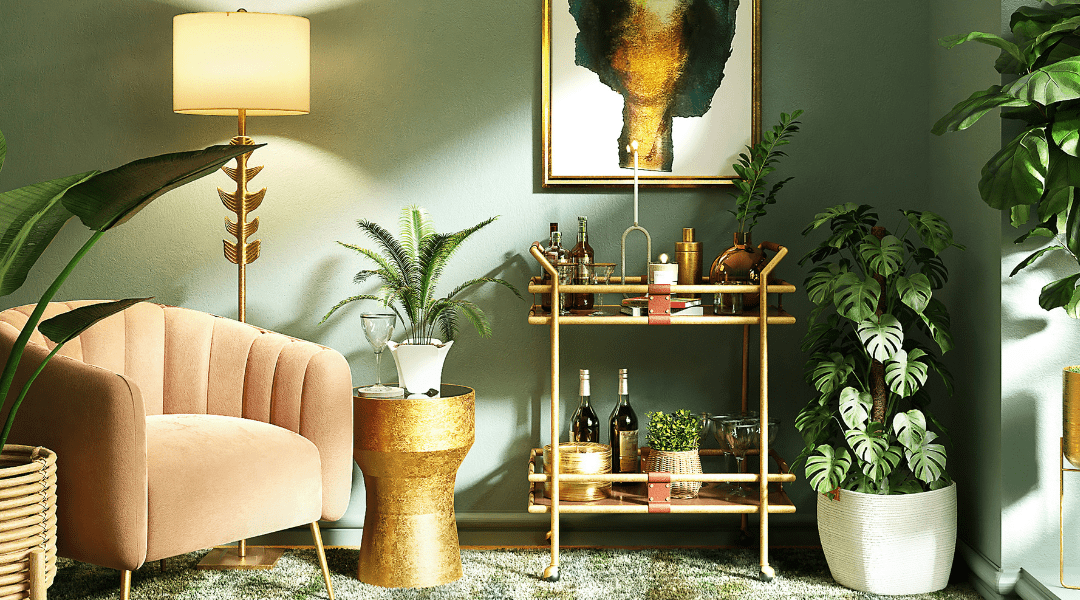Buying your first home is a huuuuge milestone, right? Mine definitely was. I still remember how proud I felt standing in my very first place—a 645 square foot condo in downtown Toronto (which I still own, by the way). It had Pepto Bismol pink walls and white wall-to-wall carpet everywhere when I took ownership and I remember my dad telling me I could’ve bought a whole three-bedroom house in Guelph for the same price.
Little did either of us know, that tiny condo would be the foundation for my financial freedom years down the line.
But I digress.
At the time, 645 square feet felt small. But by today’s standards for a one-bedroom condo? It’s practically spacious. And honestly, I’ve always liked small spaces. They can feel cozy, intentional, and just… right—if you know how to use the square footage wisely.
Living in a small space is definitely a lifestyle choice, but here’s the thing: with a few smart design tricks, I promise you won’t miss the extra square footage. In fact, you might just fall in love with living big in a small home.
Let me show you how.

Images via Pinterest.
1. Plan with Purpose: Make Every Inch Work
Before you buy anything or start rearranging furniture, get clear on how you want to use the space. Every square foot matters in a small home—so start by mapping out your zones: where you’ll eat, relax, work, and sleep.
Even in a one-room space, defining zones gives structure and balance. Use rugs, lighting, and low-profile dividers to create a natural flow, and choose furniture that fits your needs—not just the space.
When you plan with purpose, your home becomes less of a jigsaw puzzle and more of a seamless story.
2. Choose Furniture That Works Overtime
In a small space, every item needs to earn its keep. That means choosing furniture that pulls double—or even triple—duty.
Look for:
- Multi-functional pieces like ottomans with hidden storage, beds with drawers underneath, or coffee tables that lift up to become workstations.
- Foldable and stackable options you can tuck away when you’re not using them (great for dining chairs, desks, or nesting tables).
- Stylish storage solutions like benches with built-in compartments or wall-mounted shelving that keeps clutter at bay without taking up floor space.
Ask yourself:
- Does this solve more than one problem?
- Is it helping me stay organized and feel good in my space?
If the answer’s no, it might be time to swap it for something more hardworking.

Images via Pinterest.
3. Think Vertical: Use Wall Space Wisely
In a small home, when floor space runs out, you go up. Walls are some of the most underused surfaces in a home—and in small spaces, they’re pure gold.
Start with wall-mounted storage. Instead of bulky bookcases or freestanding cabinets, go for floating shelves, mounted cubes, or open vertical shelving. They free up floor space while offering spots for books, baskets, decor, and plants.
Use your entryway walls for function and style—think hooks for coats and bags, a wall-mounted organizer for mail and keys, or even a narrow ledge shelf for daily drop-zone items.
Get clever in the kitchen and bathroom too:
- Install rail systems with hanging baskets or utensils
- Use magnetic strips for knives or grooming tools
- Mount shelves over the toilet or above door frames for storing extra essentials
Even in bedrooms, think vertically. Use tall floor-to-ceiling wardrobes instead of wide dressers. Add sconce lighting instead of nightstand lamps to free up valuable surfaces. If you’re short on closet space, consider a wall-mounted clothing rack that doubles as decor.
And don’t forget about art and mirrors—hung vertically, they draw the eye upward, which makes the ceiling feel taller and the whole room feel more expansive.
In short, if you’re not using your vertical space, you’re missing out on a ton of square footage that doesn’t show up on the floor plan.

Images via Pinterest.
4. Light and Reflection: Your Space-Expanding Power Duo
If there’s one secret that interior designers swear by when it comes to making a small room feel bigger, it’s this– light and reflection.
Natural light instantly opens up a room, but so many people unintentionally block it with dark drapes, bulky furniture, or closed-off layouts. In a small space, you want to do the opposite. Use sheer or linen curtains, or skip them altogether if privacy isn’t a concern. Arrange your layout to keep windows clear, and choose reflective surfaces that help distribute that light deeper into the room.
Now layer in artificial lighting. Not just overhead lights, but things like lamps, sconces, and under-cabinet lighting. You’re aiming for light sources at different heights and intensities so you can create ambiance and avoid those gloomy corners that make a space feel more cramped than it is.
And now, let’s talk about mirrors.
A well-placed mirror can literally double the visual space in a room. Hang a large one across from a window to bounce light across the room, or place a tall mirror behind furniture to add instant depth. Want to go even further? Look for mirrored furniture or décor—like a mirrored tray on a console or nightstand—to subtly amplify light without feeling like you’re decorating a funhouse.
Together, light and reflection work like magic. They open up your space, brighten your mood, and make even the tiniest rooms feel expansive and airy.

Images via Pinterest.
5. Keep a Cohesive Colour Palette
Colour can completely shift how a space feels, especially in a smaller home. The right palette makes your home feel calm, open, and pulled together. The wrong one? Chaotic, cramped, and disjointed.
When every room is visible at a glance (which is often the case in open-plan condos or small homes), a consistent palette creates visual flow. That doesn’t mean everything has to match—but it should feel like it belongs together.
Here’s how to do it:
- Choose a dominant base colour. Something timeless like a soft neutral, warm white, greige, or even a calming sage or dusty blue.
- Layer in accent tones in pillows, throws, rugs, and art but keep them within the same tone family.
- Keep big-ticket pieces like sofas or large rugs in timeless shades so you can swap out smaller items seasonally or as your style evolves.
When choosing new pieces, ask yourself:
- Does this colour add to the overall sense of calm and cohesion?
- Or will it feel like it’s shouting for attention in the middle of the room?
And here’s something most people don’t think about. Cohesion applies to materials and finishes, too. Try repeating the same wood tone or metal finish throughout your space. That kind of visual rhythm makes everything feel curated—even if it’s not matchy-matchy.
The result? A space that feels intentional, elevated, and soothing to be in. Like it was designed by a pro.

Images via Pinterest.
Final Thoughts: Small Space, Big Impact
Small-space living isn’t about sacrificing comfort or style. It’s about being intentional. Purposeful. Creative.
Don’t be afraid to go big with your style. Choose statement lighting. Use artwork to bring a punch of colour and interest. Add texture to create depth.
And when you get it right? It’s like magic.
You’ll find yourself living bigger than ever—right where you are.


